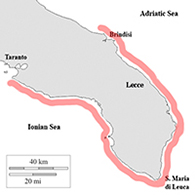Order: Nudibranchia Cuvier, 1817 - Suborder: Doridina
Family: Discodorididae Bergh, 1891
Peltodoris atromaculata Bergh, 1880
Certamente questo è il Nudibranco più comune, quello che probabilmente tutti avranno osservato anche facendo una passeggiata con maschera e pinne lungo il litorale del Salento. Quella illustrata in questa foto è una grossa Spugna (Petrosia ficiformis (Poiret, 1789)) di cui questo Nudibranco si ciba. Come si può notare molti piccoli esemplari di Peltodoris atromaculata stanno scavando questa spugna cibandosene. Certainly this is the most common Nudibranch, the one that probably everyone will have observed even taking a walk with mask and fins along the coast of Salento. The one illustrated in this photo is a large Sponge (Petrosia ficiformis (Poiret, 1789)) which this Nudibranch eats. As you can see, many small specimens of Peltodoris atromaculata are digging this sponge and eating it. |
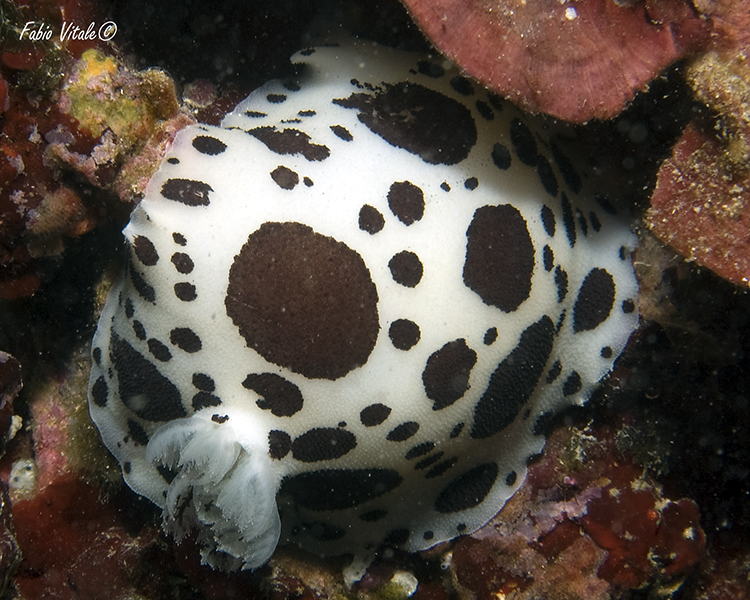 |
|---|---|
Sono tra i pochi organismi marini che riescono a farlo in quanto con le sue spicole calcaree questa spugna è decisamente tossica e grazie a questo particolare anche il Nudibranco che se ne ciba, trasferendo al suo interno questo materiale tossico, diventa anch'esso tossico ai predatori e la colorazione a macchie nere su fondo bianco che rende questo Nudibranco così visibile a chiunque (colorazione aposematica) è un forte avvertimento che scoraggia ogni potenziale predatore. They are among the few marine organisms that are able to do so as with its calcareous spicules this sponge is decidedly toxic and thanks to this particular even the Nudibranch that feeds on it, transferring this toxic material inside, also becomes toxic to predators. and the black spots on a white background that makes this Nudibranch so visible to anyone (aposematic coloring) is a strong warning that discourages any potential predator |
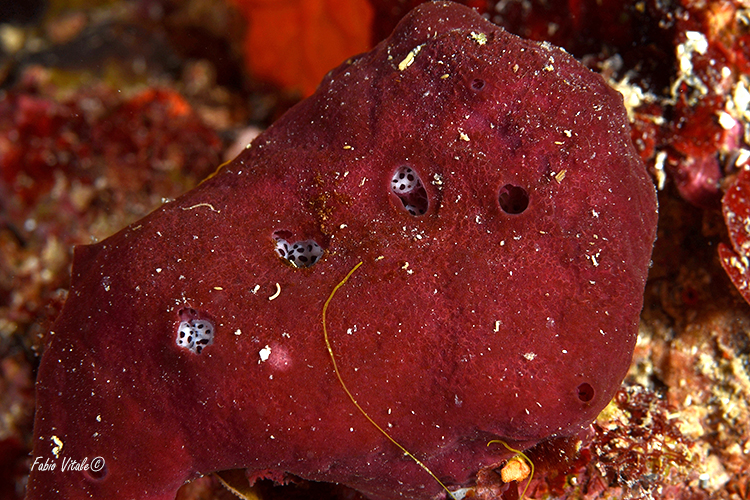 |
Dettaglio del ciuffo branchiale
|
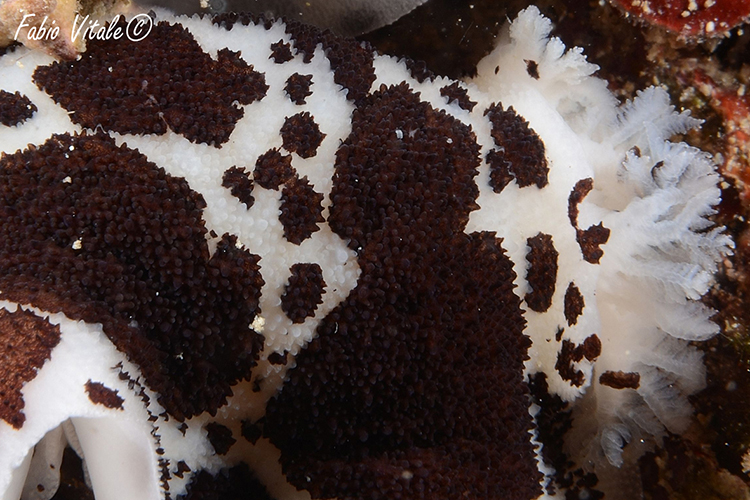 |
Ancora un dettaglio del ciuffo branchiale |
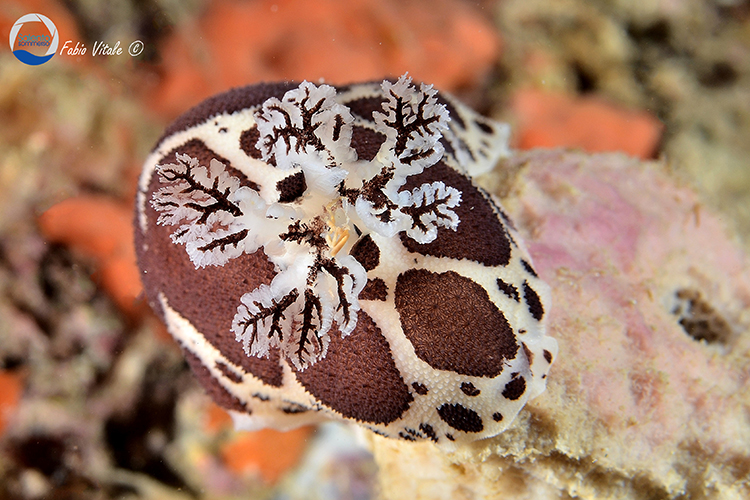 |
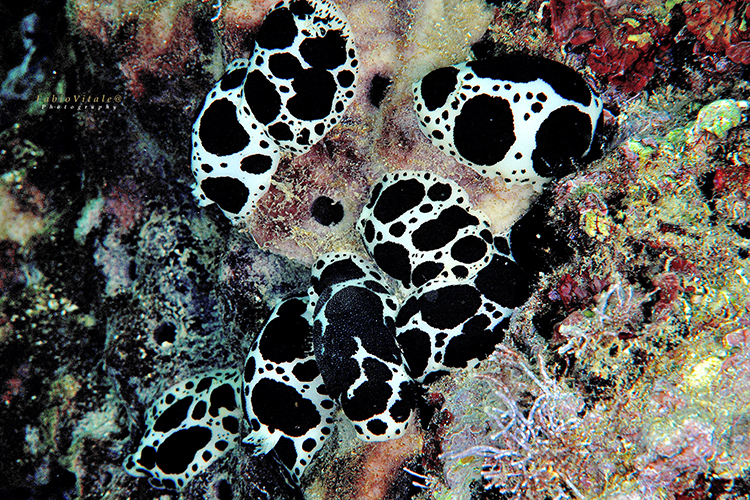 |
|
dettaglio del grosso e bellissimo nastro ovigero che depone questa specie. detail of the large and beautiful ovigerous ribbon that lays this species |
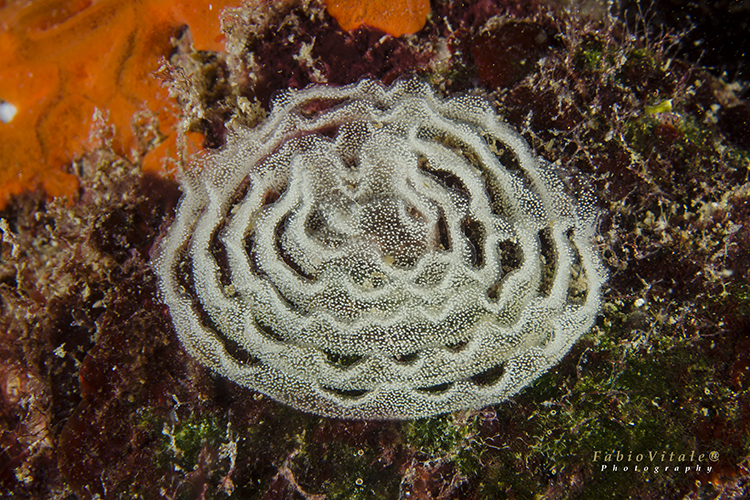 |
Bibliography Perrone A., 1983 Opistobranchi (Aplysiomorpha, Pleurobrancomorpha, Sacoglossa, Nudibranchia) del litorale salentino (Mar Jonio) (Elenco - contributo primo). Thalassia Salentina. 13 : 118 – 144 Perrone A.S., 1986 Opistobranchi (Aplysiomorpha, Pleurobrancomorpha, Sacoglossa, Nudibranchia) del litorale salentino (Mare Jonio) (Elenco - Contrib.secondo). Thalassia Salentina. 16 : 19 - 42. Micaroni et altri, 2018 Project “Biodiversity MARE Tricase”: a biodiversity inventory of the coastal area of Tricase (Ionian Sea, Italy) – Mollusca: Heterobranchia. The European Zoological Journal, 2018, 180–193 Furfaro G., Vitale F., Licchelli C. e Mariottini P. 2020 Two Seas for One Great Diversity: Checklist of the Marine Heterobranchia (Mollusca; Gastropoda) from the Salento Peninsula (South-East Italy) Diversity 2020, 12, 171; doi:10.3390/d12050171 |
|

